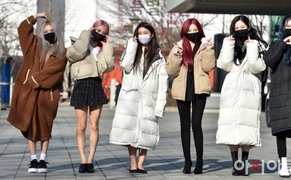 |
| Source: Shinhan Bank |
AsiaToday reporter Cho Eun-gook
The monthly income of the nation’s economically active households has risen by nearly 4 percent last year, but the households’ average consumption expenditure rose by more than 5 percent, further increasing the ratio of consumption expenditure to income. In particular, the households spent more than 50 percent of their consumption into food, transportation, and monthly rent.
This is because high interest rates and high prices have continued, and office workers have reduced cost of lunch in response to lunch-flation.
This is according to the latest report released by Shinhan Bank on Wednesday. Titled “Ordinary people’s financial life report,” it contained the results of a recent survey of 10,000 working people aged 20 to 64. The report showed that the average monthly income of the nation’s households engaged in economic activities amounted to 5.44 million won last year, which has risen by 4.4 percent, or 230,000 won, from the previous year.
However, consumption expenditure increased significantly by 5.7 percent year-on-year. An average Korean household spend about half of the money (2.76 million won) they earned (5.44 million won or $3,928) a month.
Among consumption, food expenses (640,000 won) accounted for the largest portion, followed by transportation and communication expenses (400,000 won), monthly rent and utility bills (350,000 won), and education expenses (280,000 won). Food expenses and monthly rent expenditures have increased significantly.
As a result, the nation’s office workers cut back the amount of money they spent for lunch. Due to the lunch-flation, the cost of lunch has exceeded 10,000 won. In response, 68.6 percent of respondents are found to have saved about 4,000 won for lunch by bringing their lunch box or buying convenience store lunchboxes. However, more than 20 percent of office workers said they would reduce the cost of lunch to 5,000 won, recognizing that it was still expensive.
In addition, as the cost of living is high, more than 16.9 percent of economically active households were found to have multiple jobs.
Meanwhile, the average household’s total assets reached 629.4 million won last year, a 4.8 percent increase from the previous year. Real estate assets accounted for the highest proportion out of asset classes, standing at 79.7 percent of the average household assets. Also, 64.8 percent of the households surveyed averaged 120.1 million won in debt. The average debt balance for household showed a year-on-year decrease of 7 percent from the previous year.
#lunch-flation #household #income #high prices
Copyright by Asiatoday
Most Read
-
1
-
2
-
3
-
4
-
5
-
6
-
7





















